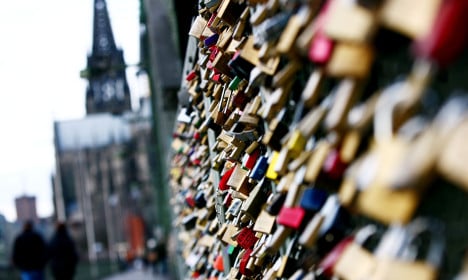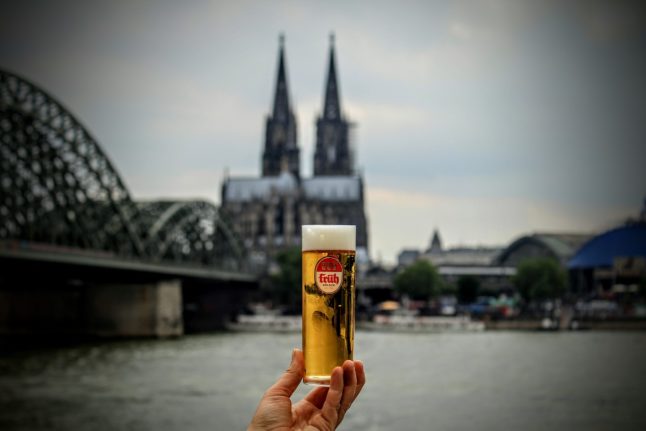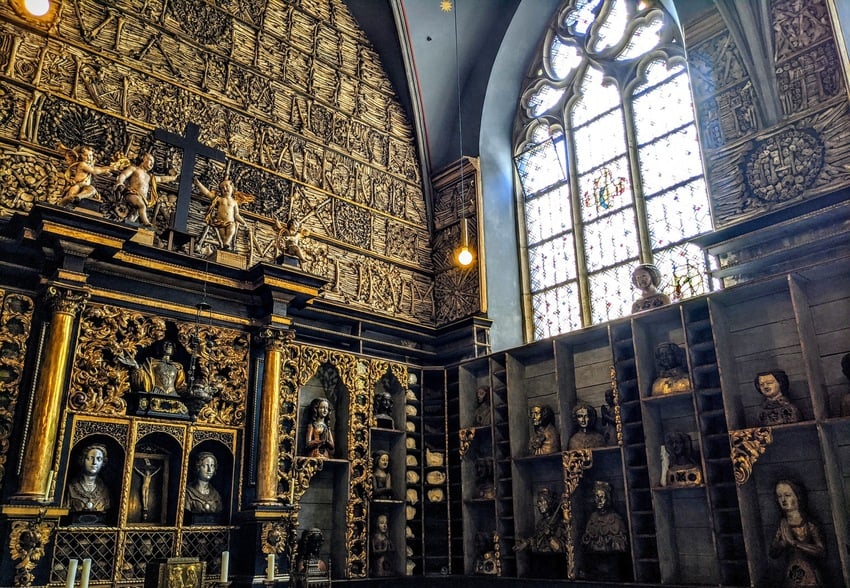Commemorating couples’ devotion to each other, the padlocks of amour on the Hohenzollernbrücke are being studied by Rhineland regional authority (LVR) folklorist Dagmar Hänig.
“At first it was only about 10, but then there were more,” she said, adding the first started appearing in the summer of 2008.
There are now more than 1,000 locks from lovebirds around the world hanging on a fence along the bridge’s pedestrian path. Some scratch their initials in the metal locks, while others have gone as far as having them professionally engraved to honour anniversaries and weddings, Hänig said.
According to the new custom, couples close the Liebesschloss and then toss the key into the Rhine to signify their enduring love.
But the origin of the young tradition remains a mystery, Hänig said.
“It could be a modification of practice by Italian military academy graduates,” she said, adding that she has been seeking the help of other folklorists internationally.
Young Italians in Florence are said to attach their old locks from their military lockers to bridges as a symbol of their new freedom. Since the 1990s these have been known as amorchetti. A bridge in Rome has also attracted lovers’ locks. But how they could have come to Germany – and beyond in places like Riga, Kaliningrad, Siberia and China – remains a mystery, Hänig said.
Now people in Cologne are also honouring family, friends and organisations with love locks, which she said are an extension of Germany’s “modern and individualised society.”
While love generally goes without controversy, national rail provider Deutsche Bahn reportedly took issue with the commemorative locks and threatened to remove them for safety reasons. But they have since reconsidered.
“The Hohenzollernbrücke is among the most heavily trafficked bridges in Europe,” a spokesperson said. “A few extra kilogrammes of metal are more or less insignificant.”
Meanwhile the city’s environment ministry said it sees no danger to the Rhine ecosystem due to the keys.
“An old bicycle in the Rhine weighs more than a thousand keys,” a spokesperson there said, adding that the keys would be carried downstream anyway.
Citing recent reports of love locks spotted in Bottrop and Oberhausen, Hänig said she planned to continue following how the practice develops in Germany in hopes of finding its root.






 Please whitelist us to continue reading.
Please whitelist us to continue reading.
Member comments